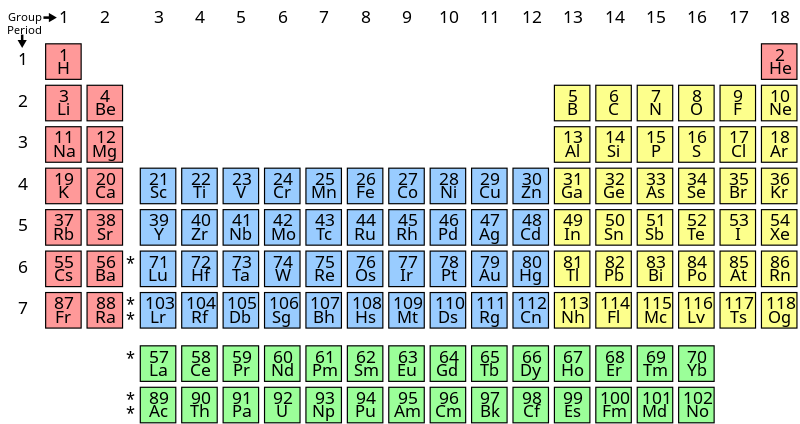
What is the formula mass of the iodine molecule?
Answer
408k+ views
Hint :Iodine has a chemical symbol ‘ $ I $ ’. It has atomic number 53 which is denoted by the symbol ‘Z’. It is a non- metal which is present in the p- block of the periodic table. It exists in the molecular form as $ {I_2} $ which is known as the Iodine molecule. Molecular weight of any molecule is calculated by multiplying the atomic mass of one atom by the total number of atoms in the molecule.
Complete Step By Step Answer:
Iodine is a non-metal present in the p-block of the periodic table. It is denoted by the chemical symbol ‘ $ I $ ’. It has atomic number 53 which is denoted by the symbol ‘Z’.
Now, we will see the period table:-

In the above periodic table, The elements in the yellow coloured boxes from group $ 13 $ to group $ 18 $ are known as p-block elements or main-group elements. Their general electronic configuration is $ n{s^2}n{p^{1 - 6}} $ .
The Iodine element is present in the fifth period and seventeenth group of the periodic table. It is a member of the halogen family.
Iodine exists as a $ {I_2} $ molecule in the molecular form. Hence, there are two iodine atoms in the molecule of iodine. Molecular weight ( which is also known as formula mass)of any molecule is calculated by multiplying the atomic mass of one atom by the total number of atoms in the molecule.
Atomic mass is denoted by A. Atomic mass of Iodine is $ 126.9gmo{l^{ - 1}} $ .
An iodine molecule contains two iodine atom and hence, we can calculate Formula mass of iodine molecule as:
$ = (126.9 \times 2)gmo{l^{ - 1}} $
$ = 253.8gmo{l^{ - 1}} $
Therefore, the formula mass of an iodine molecule is $ 253.8gmo{l^{ - 1}} $ .
Note :
Iodine has many applications in our lives. Iodine is used in disinfectants, dyes, pharmaceuticals, catalysts and animal food. It is also used to make polarising filters for LCD displays. Iodine deficiency can affect the thyroid gland and hence it is added in small amounts to table salt, so that we can intake it.
Complete Step By Step Answer:
Iodine is a non-metal present in the p-block of the periodic table. It is denoted by the chemical symbol ‘ $ I $ ’. It has atomic number 53 which is denoted by the symbol ‘Z’.
Now, we will see the period table:-

In the above periodic table, The elements in the yellow coloured boxes from group $ 13 $ to group $ 18 $ are known as p-block elements or main-group elements. Their general electronic configuration is $ n{s^2}n{p^{1 - 6}} $ .
The Iodine element is present in the fifth period and seventeenth group of the periodic table. It is a member of the halogen family.
Iodine exists as a $ {I_2} $ molecule in the molecular form. Hence, there are two iodine atoms in the molecule of iodine. Molecular weight ( which is also known as formula mass)of any molecule is calculated by multiplying the atomic mass of one atom by the total number of atoms in the molecule.
Atomic mass is denoted by A. Atomic mass of Iodine is $ 126.9gmo{l^{ - 1}} $ .
An iodine molecule contains two iodine atom and hence, we can calculate Formula mass of iodine molecule as:
$ = (126.9 \times 2)gmo{l^{ - 1}} $
$ = 253.8gmo{l^{ - 1}} $
Therefore, the formula mass of an iodine molecule is $ 253.8gmo{l^{ - 1}} $ .
Note :
Iodine has many applications in our lives. Iodine is used in disinfectants, dyes, pharmaceuticals, catalysts and animal food. It is also used to make polarising filters for LCD displays. Iodine deficiency can affect the thyroid gland and hence it is added in small amounts to table salt, so that we can intake it.
Recently Updated Pages
Master Class 11 Economics: Engaging Questions & Answers for Success

Master Class 11 Business Studies: Engaging Questions & Answers for Success

Master Class 11 Accountancy: Engaging Questions & Answers for Success

Master Class 11 English: Engaging Questions & Answers for Success

Master Class 11 Computer Science: Engaging Questions & Answers for Success

Master Class 11 Maths: Engaging Questions & Answers for Success

Trending doubts
How is phenol converted to salicylic acid class 11 chemistry CBSE

Why was the Vernacular Press Act passed by British class 11 social science CBSE

Arrange Water ethanol and phenol in increasing order class 11 chemistry CBSE

Name the nuclear plant located in Uttar Pradesh class 11 social science CBSE

One Metric ton is equal to kg A 10000 B 1000 C 100 class 11 physics CBSE

What steps did the French revolutionaries take to create class 11 social science CBSE




